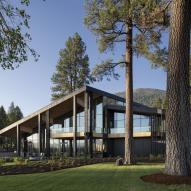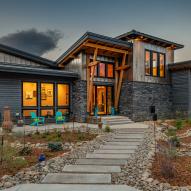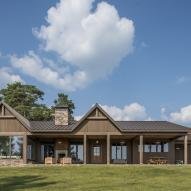EVERYTHING YOU WANTED TO KNOW (BUT DIDN’T DARE ASK) ABOUT SHOU SUGI BAN
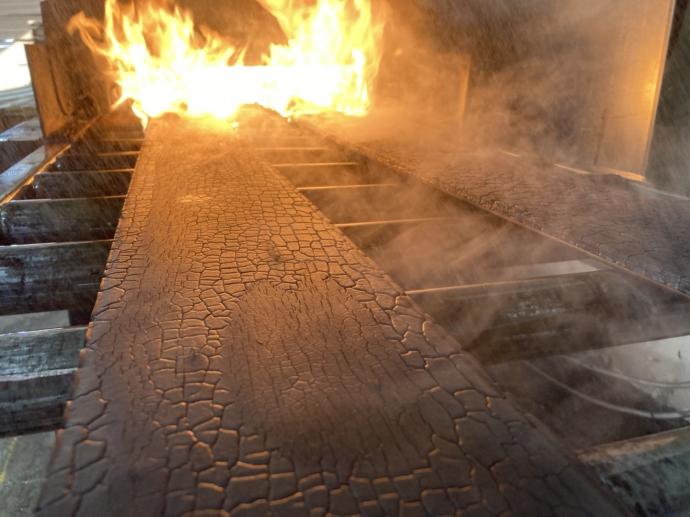
Intentionally charring wood? Though it may seem a bit unorthodox, the benefits and history of this technique show it to be a very useful surface treatment. We’ve taken the time-honored Japanese practice and updated it with a uniquely American spin, wire brushing away layers, adding color tones, experimenting with species like Larch, Douglas fir and Accoya ®.
The history: The term “Shou-Sugi-Ban” is Japanese (焼杉板) and translates to “burnt cedar board”. While the exact origins of Shou Sugi Ban are unknown, it is estimated to have been in use in Japan since the 1700’s. Driftwood weathered, salted, and sun dried served as the original wood source. Charring the outermost layer left blackened lignin which is insect, rot, and fire resistant (if you’ve ever tried to reignite a piece of firewood that has already been exposed to flame, you can imagine the same difficulty with trying to burn Shou Sugi Ban wood).
Below are common questions, and a few we’ve asked ourselves as we’ve developed our Shou Sugi Ban options.
Why would I use this technique?
Today most folks use it for decorative purposes. Our Shou Sugi Ban finish is a dynamic surface treatment, which depending on the length of the burn, can either gently highlight the natural grain pattern in the wood to toasted tones, or carbonize the entire wood face to an even jet black hue. This potential for a range of effects suits contemporary design trends towards natural materials with rich and vivid surfaces. While traditional Japanese Shou Sugi Ban was a primarily a preservative treatment, we consider any gained insect or rot resistance a bonus.
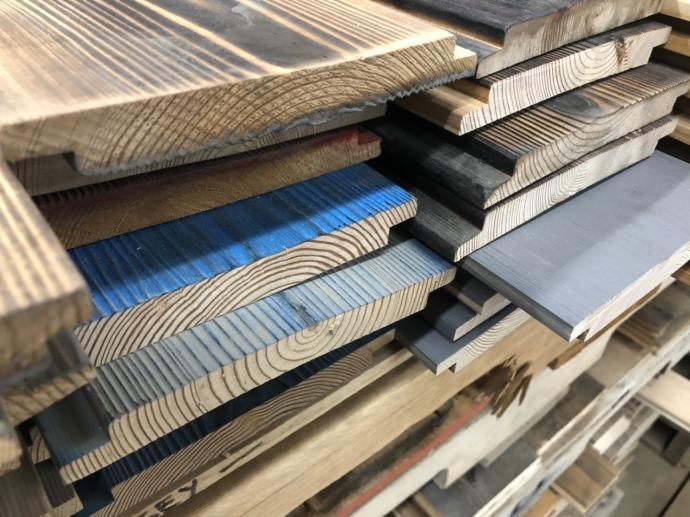
If I touch it will my hands/clothing turn black? Our standard finishing topcoat will encapsulate most of the char, but some residue may still transfer upon contact. For applications which require complete encapsulation, we can treat the finish with a custom topcoat so that the product will pass the “white sweater test”.
Does it smell like burnt wood? Slightly, but the finishing topcoat minimizes this.
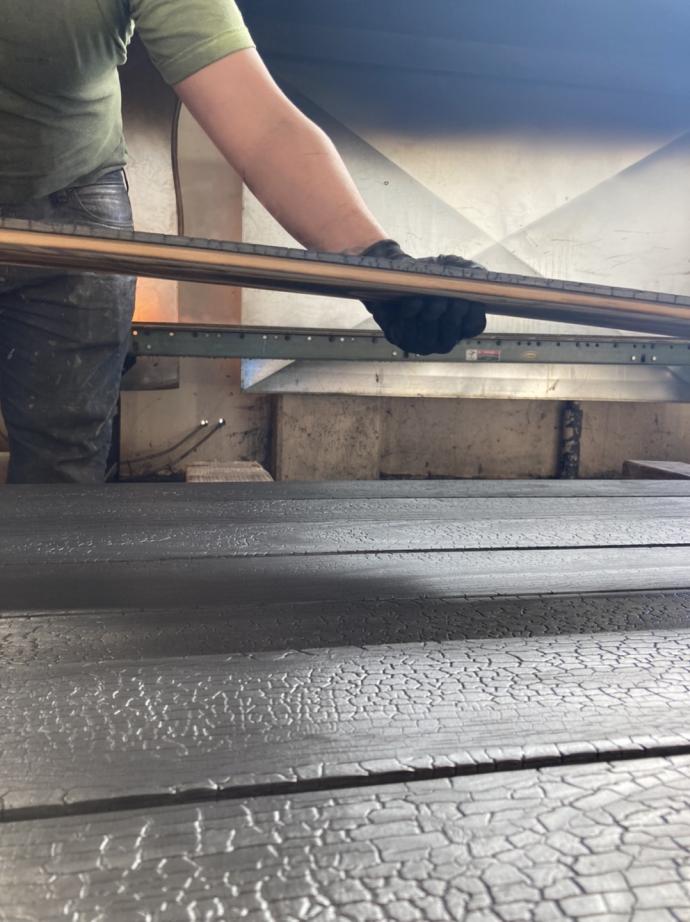
Is it a harmful finish to me or the environment? The burnt wood itself is perfectly harmless. We apply a Zero VOC finish as a topcoat so that the finished product is as eco-friendly as all of our other product lines.

Does it work on all types/species of wood? Any wood can be burned but some char better than others. We have chosen to use sustainable Larch, Douglas fir, and Accoya because of their ability to take well to the burning and finishing process while still adhering to our ethos.
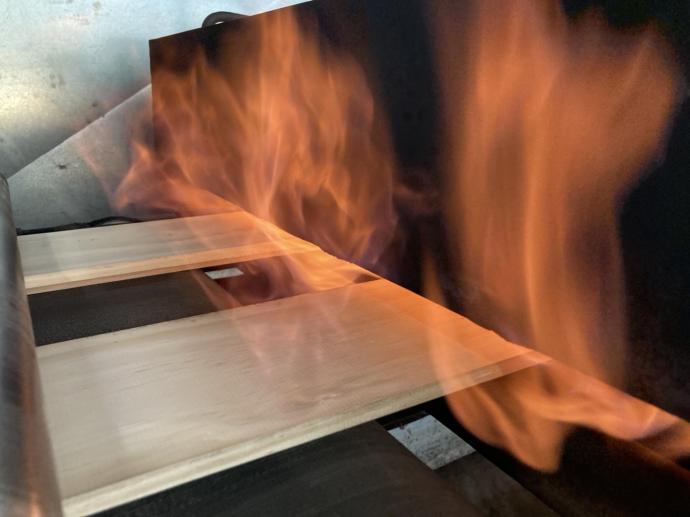
How do you char the wood? We’ve explored many methods, from the traditional to more modern and mechanized. What we’ve found works best is to torch it in a custom-built chamber which focuses the heat onto the wood and maximizes the burn. This allows us to efficiently burn more wood in less time.
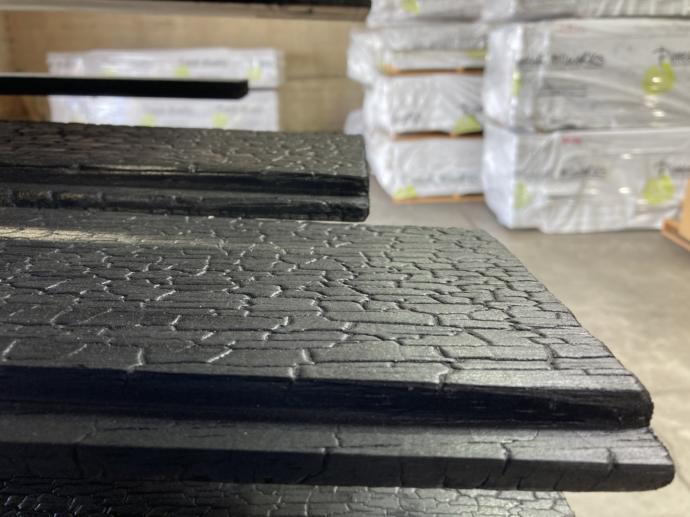
What about the edges? Do they stay uncharred? Where edges may be visible, with a shiplap profile, for example, we will char edges or even apply a dark tint as the milling dictates to ensure a consistent look.
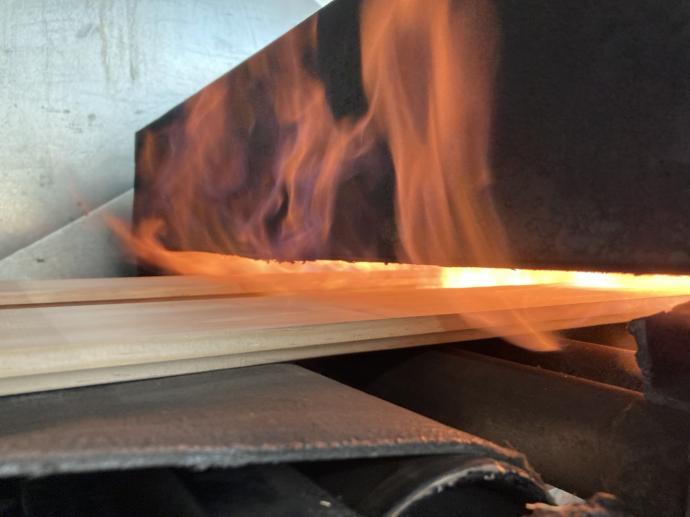
Does charring weaken the wood? The charring only affects the outer surface of the wood, penetrating no more than 1/16” into the material. Our Shou Sugi Ban products are structurally sound.
Will the surface last/how does it wear over time? Shou Sugi Ban is a dynamic finish which means that it is guaranteed to change over time. Even on traditional Japanese Shou Sugi Ban siding the black char will eventually erode depending on its exposure to the elements. The evolving look suggests the Japanese aesthetic of wabi-sabi – a reminder of the transience and imperfection of all things.
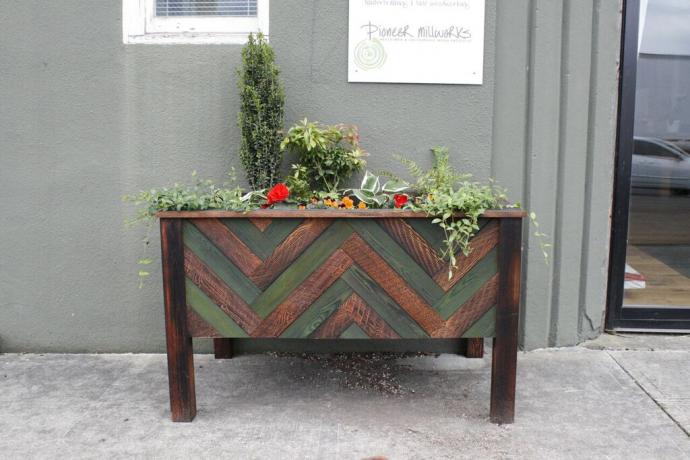
Color Char combined with Shallow Char highlight the exterior of a planter at our Portland, OR studio.
Can I apply this technique myself? Though you could, great caution should be taken when working with fire and we don’t recommend doing this at home or without the help of a professional.
What maintenance is required? Traditional Shou Sugi Ban was left to age naturally, which means the black hues faded over time to the wood’s natural patina or turned grey (just as cedar or other woods do when left in the elements). We recommend refinishing the surface regularly per the finish manufacturer’s recommendation. If the intent is to maintain a stable opaque black color, we recommend combining Shou Sugi Ban with a black tinted oil. This will also require regular maintenance.
Does the non-charred side need to be maintained/protected? Typically no, but it is dependent on usage. For example, if the non-charred side will be exposed to the elements, we would recommend protecting it with a finish.
I’ve heard it helps against fire. Is that true? This may have been the case with traditional Japanese Shou Sugi Ban which burned deeper into the wood, but our Shou Sugi Ban does not add any guaranteed fire resistance to the wood. We can add a fire retardant to the topcoat upon request.
Will bugs eat it? Our Shou Sugi Ban product is not treated with any insecticide so there is no guarantee that it will be free of future insect damage. Larch & Douglas fir are naturally unappetizing to most insects, but there is no evidence that the burn makes it more or less likely to attract wood damaging bugs like termites, ants, and carpenter bees. Accoya, because of its treatment has no sugar left for insects to enjoy and also take beautifully to charring (and it comes with a 50 year above ground warranty).
Can it be used as flooring? Would the installation be any different from standard products? While our Shou Sugi Ban product was designed to be primarily a siding or paneling product, it certainly can be applied in some variation as flooring. Because foot traffic is likely to wear off any deep char, we recommend a light char on a harder species. If a deep char look is preferred, we can always provide a close simulation and proven durability with our Custom Black finish.

Have more questions on Shou Sugi Ban or want to talk specifics on any of our wood products? Send us a note or give us a call at 800.951.9663. If you’re in the Portland, OR or Rochester, NY area—stop by our studios to check out samples in person.


